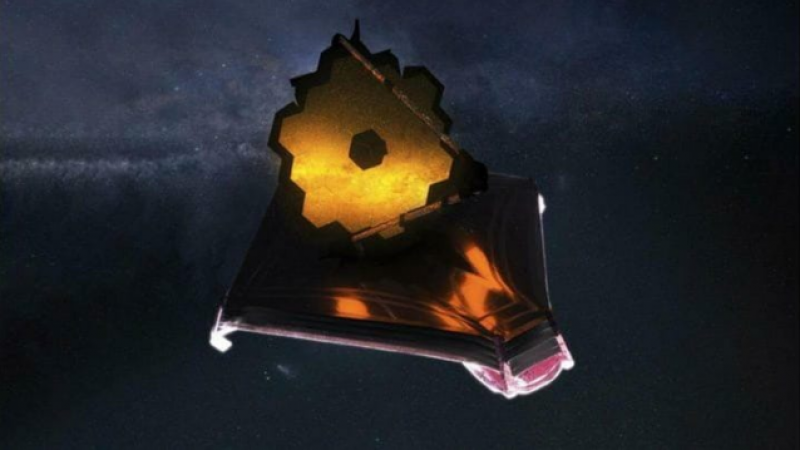
USA: From a deep-field image from the James Webb Space Telescope, three of the oldest galaxies have been identified. These galaxies, which resembled a rare class of small galaxies known as "green peas", were very small. It is interesting to note that the three galaxies are seen as they were 13.8 billion years ago, about 5% of the present age of the universe.
Recall that the deep field image was the first photograph ever taken with the James Webb Telescope. Thousands of galaxies can be seen in and behind the galaxy cluster known as SMACS 0723, the deepest and sharpest infrared image of the farthest reaches of the universe to date. A distant trio of galaxies was just discovered behind the SMACS 0723 cluster.
The Green Pea Galaxies were found in 2009. They are relatively small galaxies, only 5,000 light-years in diameter, or about 5% the size of the Milky Way.
Also Read: One-in-50,000-year comet is captured by India's Chandra telescope
The Green Pea Galaxy has unusual colors because some of its light originates from bright gas clouds. These gases emit light at particular wavelengths, unlike stars, which produce a rainbow-like spectrum of continuous colour.
Sangeeta Malhotra, a researcher at NASA's Goddard Space Flight Center, said: "And we see that they are young galaxies in every sense – full of young stars and glowing gas with some chemical byproducts recycled from earlier stars." In fact, one of them may be the most chemically primitive galaxy yet discovered, with only 2% oxygen like our Milky Way.
Also Read: A fossil with a dinosaur-like head sheds light on the evolution of birds
The spectra of some of the galaxies were also recorded by Webb's in-house Near-Infrared Spectrograph (NIRSpec) instrument. They were able to determine the amount of oxygen in these galaxies for the first time using spectral data.
Also Read: NASA's Hubble Space Telescope captures a stunning star cluster 20,000 light-years away
After analysis, the scientists found that the distant galaxies were roughly the same size as the Green Pea Galaxies. Oxygen levels in the two galaxies were about 20% higher than in the Milky Way.